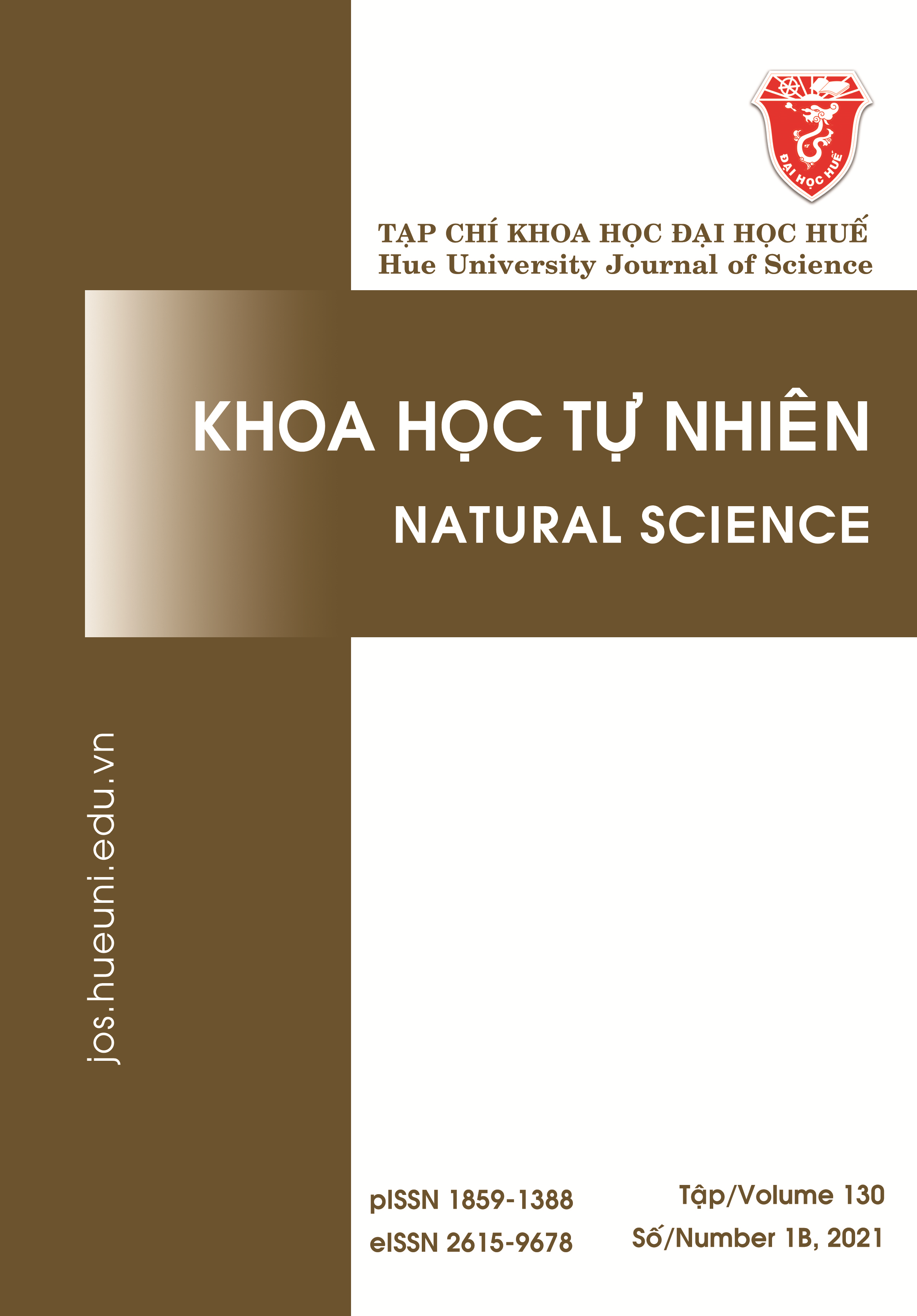Abstract
From the ethyl acetate extract of the leaves of Amensiodendron chinense (Merr.) Hu (Sapindaceae), we isolated three known phenolic compounds: 4-hydroxy-3-methoxybenzaldehyde (1), methyl 3,4-dihydroxybenzoate (2), and 3,4-dihydroxybenzoic acid (3). We elucidated their chemical structures from the spectral data and compared them with those reported in the literature.
References
- Pridham JB. Low molecular weight phenols in higher plants, Annual Review of Plant Physiology. 1965;16(1):13-36.
- Bruneton J. Pharmacognosy, phytochemistry, medicinal plants. 3rd ed. Hampshire: Intercept Ltd; 1999. 1119 p.
- Manach C, Scalbert A, Morand C, Rémésy C, Jiménez L. Polyphenols: food sources and bioavailability. The American Journal of Clinical Nutrition. 2004;79(5):727-747. DOI: https://doi.org/10.1093/ajcn/79.5.727
- Cheynier V. Polyphenols in foods are more complex than often thought. The American Journal of Clinical Nutrition. 2005;81(1):223S-229S. DOI: https://doi.org/10.1093/ajcn/81.1.223s
- De la Rosa LA, Alvarez-Parrilla E, González-Aguilar GA. Fruit and vegetable phytochemicals: chemistry, nutritional value and stability. Ames: Wiley-Blackwell; 2009. 384 p.
- Kougan GB, Tabopda T, Kuete V, Verpoorte R. 6 - Simple Phenols, Phenolic Acids, and Related Esters from the Medicinal Plants of Africa. In: Kuete V, editor. Medicinal Plant Research in Africa. Oxford: Elsevier; 2013. p. 225-49.
- Vijaya KRC, Sreeramulu D, Raghunath M. Antioxidant activity of fresh and dry fruits commonly consumed in India. Food Research International. 2010;43(1):285-288. DOI: https://doi.org/10.1016/j.foodres.2009.10.006
- Sarawong C, Schoenlechner R, Sekiguchi K, Berghofer E, Ng PK. Effect of extrusion cooking on the physicochemical properties, resistant starch, phenolic content and antioxidant capacities of green banana flour. Food Chemistry. 2014;143:33-39. DOI: https://doi.org/10.1016/j.foodchem.2013.07.081
- Someya S, Yoshiki Y, Okubo K. Antioxidant compounds from bananas (Musa Cavendish). Food Chemistry. 2002;79(3):351-354. DOI: https://doi.org/10.1016/s0308-8146(02)00186-3
- Tanaka T, Shnimizu M, Moriwaki H. Cancer Chemoprevention by Carotenoids. Molecules. 2012 03;17(3):3202-3242. DOI: https://doi.org/10.3390/molecules17033202
- Eliassen AH, Hendrickson SJ, Brinton LA, Buring JE, Campos H, Dai Q, et al. Circulating carotenoids and risk of breast cancer: pooled analysis of eight prospective studies. JNCI: Journal of the National Cancer Institute. 2012;104(24):1905-1916. DOI: https://doi.org/10.1093/jnci/djs461
- Pojer E, Mattivi F, Johnson D, Stockley CS. The case for anthocyanin consumption to promote human health: A review. Comprehensive Reviews in Food Science and Food Safety. 2013;12(5):483-508. DOI: https://doi.org/10.1111/1541-4337.12024
- Ban NT. List of Vietnamese plant species. Hanoi: Agriculture Publishing House; 2003. 1016 p. Vietnamese
- Ho PH. An illustrated flora of Vietnam. Ho Chi Minh City: Young Publisher; 2003. 326 p. Vietnamese
- Ma W, Qin L. Chemical constituents of arabidopsis thaliana. Chemistry of Natural Compounds. 2014;50(4):776-777. DOI: https://doi.org/10.1007/s10600-014-1083-9
- Megawati, Darmawan A, Fajriah S, Primahana G, Dewi RT, Minarti, et al. Antioxidant and α-glucosidase activities of benzoic acid derivate from the bark of Myristica fatua Houtt. AIP Conference Proceedings. 2017;1904(1):020027. DOI: https://doi.org/10.1063/1.5011884
- Nguyen D, Seo D, Kim K, Park R, Kim D, Han Y, et al. Nematicidal activity of 3,4-dihydroxybenzoic acid purified from Terminalia nigrovenulosa bark against Meloidogyne incognita. Microbial Pathogenesis. 2013;59-60:52-59. DOI: https://doi.org/10.1016/j.micpath.2013.04.005

This work is licensed under a Creative Commons Attribution-ShareAlike 4.0 International License.
Copyright (c) 2021 Array




